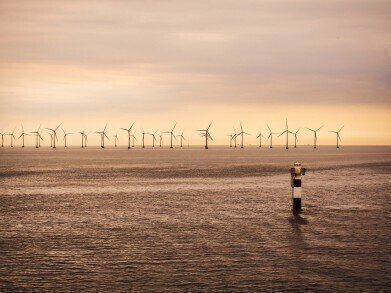Business News
Why Is Wind Power Getting Cheaper?
Aug 13 2020
The price of wind power has fallen rapidly in recent years and may soon reach a point where it no longer requires subsidising from the UK government – or even becomes subsidy-negative. That means that the most recently approved offshore wind farms could actually pay money back to the government and therefore back to the taxpayer in the form of reduced bills.
The staggering development is largely down to the advancement of the technology itself – which poses numerous challenges – as well as the widespread adoption of offshore wind power across the UK. The government must also receive praise for their forward-thinking policies, which have encouraged investment into the renewable power source for the past decade and which are now beginning to pay handsome dividends.
What are subsidy-negative wind farms?
In the UK, companies must enter an auction and bid upon the price at which they will sell power to the government, before the contract for the wind farm is awarded. These arrangements are known as contracts for difference (or CfDs).
If, after construction of the site, the winning company’s bid outstrips the going rate for wholesale electricity on the British market, the government will compensate them with the difference in the form of subsidies. However, if the bid is below the wholesale rate, the company must pay back the difference to the government, creating a subsidy-negative wind farm.
According to analysis carried out by Imperial College London, the latest round of wind farms approved in the UK could soon qualify for subsidy-negative status. That’s because the winning bids offered to sell wind power at just £40 per megawatt hour, a 30% reduction on bids in 2017 and a 66% drop from 2015. The auction made international headlines at the time and increases the likelihood that the UK will be home to the first subsidy-negative offshore wind farms in the world.
Technology and policy
One of the major contributing factors towards the falling price of wind energy is the advancement of technology, with the ability to construct bigger farms further from the shoreline a particular boon. The largest turbines currently have blades of up to 220m in size, meaning they can harvest more energy with one cycle. What’s more, their remote offshore location gives them greater access to higher wind speeds.
“This amazing progress has been made possible by new technology, economies of scale and efficient supply chains around the North Sea, but also by a decade of concerted policymaking designed to reduce the risk for investing in offshore wind, which has made financing these huge billion-pound projects much cheaper,” explained Dr Iain Staffell, one of the contributors to the recent report.
The news is positive not only for homeowners who can soon expect cheaper energy for the first time in years, but also for the environment. A transition to renewable forms of energy would be greatly assisted if it makes economic as well as ecological sense and could help the UK to achieve its greenhouse gas emissions targets for 2020 and beyond.
Digital Edition
IET 34.2 March 2024
April 2024
Gas Detection - Biogas batch fermentation system for laboratory use with automatic gas analysis in real time Water/Wastewater - Upcycling sensors for sustainable nature management - Prist...
View all digital editions
Events
Apr 22 2024 Hannover, Germany
Apr 22 2024 Marrakech, Morroco
Apr 23 2024 Kuala Lumpur, Malaysia
Apr 23 2024 Kintex, South Korea
Apr 23 2024 Edmonton, AB, Canada



















